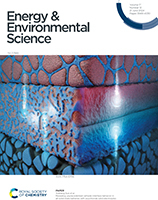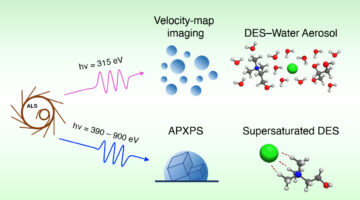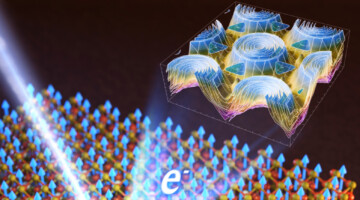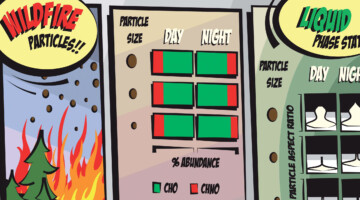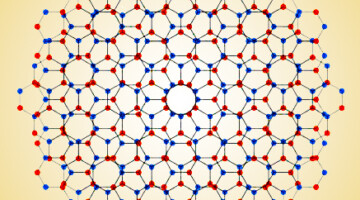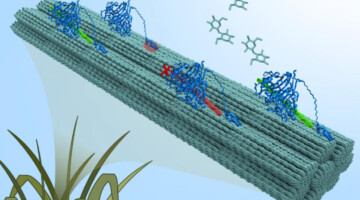This research provides crucial insights into the innovative design of high-performance all-solid-state batteries (ASSLBs) based on the promising lithium tantalum oxychloride (LTOC) solid electrolytes. Read more »
ALS Work Using Spectroscopy
These techniques are used to study the energies of particles that are emitted or absorbed by samples that are exposed to the light-source beam and are commonly used to determine the characteristics of chemical bonding and electron motion.
Surprise Mineral Precursor Found in Coral Skeletons and Mollusk Shells
Researchers studied samples from corals, mollusks, and sea urchins, at edges where mineral precursors start to form the new shell or skeleton. There, they found a surprise: corals and mollusks produced a mineral precursor that had never been observed before in living organisms or rocks, and had only recently been created synthetically. Read more »
Probing the Liquid/Vapor Interface of a Tunable Solvent
Despite the ready tunability and industrial promise of deep eutectic solvents (DESs), there have been few x-ray spectroscopy studies at their liquid/vapor interfaces—which is relevant for their use in applications such as greenhouse-gas capture. Here, researchers probed the liquid/vapor interface of a benchmark DES using complementary spectroscopies. Read more »
Mechanics of a Floating Molecular Layer for CO2 Reduction
Researchers discovered how a layer of organic molecules on a nanoparticle surface detaches to create a highly catalytic pocket for reducing CO2 to CO. The ability to probe molecular-scale events under realistic conditions with nanometer resolution will help guide the design of responsive systems for a wide range of applications, from medicine to optoelectronics. Read more »![]()
![]()
Room-Temperature 2D Magnet: Electronic-Structure Insights
Researchers found that small changes in how electron spins interact with each other can make a big difference in the magnetic transition temperatures of 2D magnets. Understanding such factors can help create better magnetic materials for information storage, sensors, medical imaging, and energy-efficient computing. Read more »![]()
![]()
Case Study of Aerosol Particles Influenced by Wildfire
Researchers studied atmospheric aerosols influenced by wildfires in the Pacific Northwest. They examined the connection between particle size, chemical composition, and phase state, in particles collected during the day and at night. The information is important for modeling the effects of wildfire smoke on atmospheric properties. Read more »
Big Twist Leads to Tunable Energy Gaps in a Bilayer Stack
Researchers found that twisting 2D layers at atypically large angles opens up potentially useful energy gaps in the material’s band structure. The results suggest a new way to tune materials for optoelectronic applications and provide a platform for exploring novel “moiré” phenomena beyond those observed at small twist angles. Read more »![]()
![]()
Probing Active-Site Chemical States in a Co-Based Catalyst
Researchers identified the dominant chemical state of active sites in a cobalt-based catalyst using resonant photoemission spectroscopy under realistic conditions. The work will help scientists develop more-efficient catalysts for removing noxious carbon monoxide gas from exhaust streams generated by the burning of fossil fuels. Read more »![]()
![]()
Tracking the Breakdown of Cellulose at the Micron Scale
A time-resolved study using infrared spectromicroscopy in a carefully controlled environment revealed why enzymes get bogged down when trying to break up cellulose from plants. The work sheds new light on the challenge of extracting the sugars locked up in plants for use in making petroleum-free fuels, chemicals, and medicines. Read more »![]()
![]()
Watching the Enzymes that Convert Plant Fiber into Simple Sugars
Research from Lawrence Berkeley National Laboratory, Lawrence Livermore National Laboratory, and UC Davis sheds new light on how to access the sugars locked up in plants to produce petroleum-free fuels, chemicals, and medicines. The technique used combines a novel microfluidic device and infrared spectroscopy to study how a cellulose-degrading enzyme works in real time. Read more »
- « Previous Page
- 1
- 2
- 3
- 4
- 5
- 6
- …
- 30
- Next Page »
